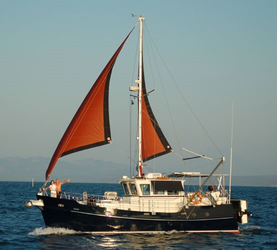I'm happy and relieved to be done with all the hole digging. Every time I am required to do any digging on my property I swear to myself that I will never do it again. The ground is comprised of what I can only describe as boulders. Boulders glued to the earth between layers of hard packed clay and the beginnings of sedimentary rock. Absolutely brutal. However with enough time, breaker bars, sledgehammers and post hole diggers the job is done and all the posts are in place; plumb and square.
I am a strong proponent of the right tool for the job concept. I am an amateur woodworker so tools have a special place in my heart. When necessary to do a job I think of tool purchases as an investment. Not to say there are not limits of course. I'm also a home show junkie so when a TV pro pulls out some computer controlled CNC machine to create a piece with the perfect fit I regularly cry foul. The average amateur cannot afford a 3 or 4 thousand dollar piece of equipment limited to very specific applications.
So when it came time to cut all the posts to size, with all needing to be equal, I needed the right tool for the job. I didn't say the ideal tool, just the right one. Ideally a tripod mounted laser transit would have been the perfect choice. $1000 tool with a very specific purpose that I may never use again, not going to happen. So the right tool(s) ended up being a couple of vary basic and inexpensive laser levels; one used for hanging picture frames and a 12" torpedo level with laser capability. I cannot say the word "laser" anymore without the Dr. Evil inflection. So know that every time you see that word here my pinky is firmly against the corner of my mouth as I strike my best Dr. Evil pose.
This is a two person job for sure and using the laser levels, a 6' standard level, a couple clamps and a piece of scrap plywood with a line drawn on it we were able to get the job done. We worked off the lowest post making marks on each post with the aid of the laser dot. By clamping the scrap of plywood to a distant post we were able to "shoot" the laser to strike the leveled plywood on the line we marked on it. With the laser dot on the line and with the line level we simply transferred a mark onto the post as an extension of the line on the plywood. Once we had our marks we snapped a chalk line and then transferred that line to the knee wall on the other side, again with the aid of the laser levels. We repeated the process on the other knee wall and the job was done in under an hour.
My plan was to buy 8' 4x4's, cut them in half and bury 2 feet in the ground and have 2 feet above ground. Then I would rip a sheet of plywood in half and have a perfect 2 foot knee wall on each side with zero waste. I was naïve to believe things would go that perfectly. While the site work was done very well by the bobcat and it was relatively leveled out which was confirmed by the contractors surveying equipment. However relatively is not close enough once you get into construction where an inch here and there makes a big difference. Now factor in the digging of the holes and having a hole here and there and inch or two deeper or shallower and all those measurements are for not. Once completed the knee wall ended up being about 20" tall. That is going to work fine with the only downside being my OCD will have to live with the small amount of plywood waste. The height of the knee wall was only important to gaining additional height of the final structure to house the boat, I'll be fine losing those 4 inches.
The next step was to add the pressure treated 2x4's as the bottom rail and regular 2x4's as the top rail set at the marks we made with the laser. The posts were then cut to size with a reciprocating saw and the 2x6 top plate was installed. In the next few days I'll rip the plywood to size on the table saw and attach them to the knee walls. Once that's completed arch assembly will commence at full speed!
Hopefully the picture is becoming clearer as to what I'm trying to accomplish. the above pictures illustrate how the arches will be mounted to the top plate to span the open area between. I swear I will eventually get to the arch assembly and jig pictures and explanations. I just keep getting distracted by the other steps in the process. It's coming soon, I promise!

Welcome to the Sea Dreamer Project! This is the story of a complete boat building novice and his family with no previous nautical experience constructing a 41 foot Diesel Duck in the backyard of an Upstate New York home. This George Buehler designed trawler yacht is a blue water cruiser designed to cross oceans. Built mostly of home center lumber, epoxy and galvanized hardware, this boat is within the reach of an average person. It's the internet boat project for the rest of us!
Diesel Duck 382

Diesel Duck 382 with the "get home" steadying sails up.




No comments:
Post a Comment